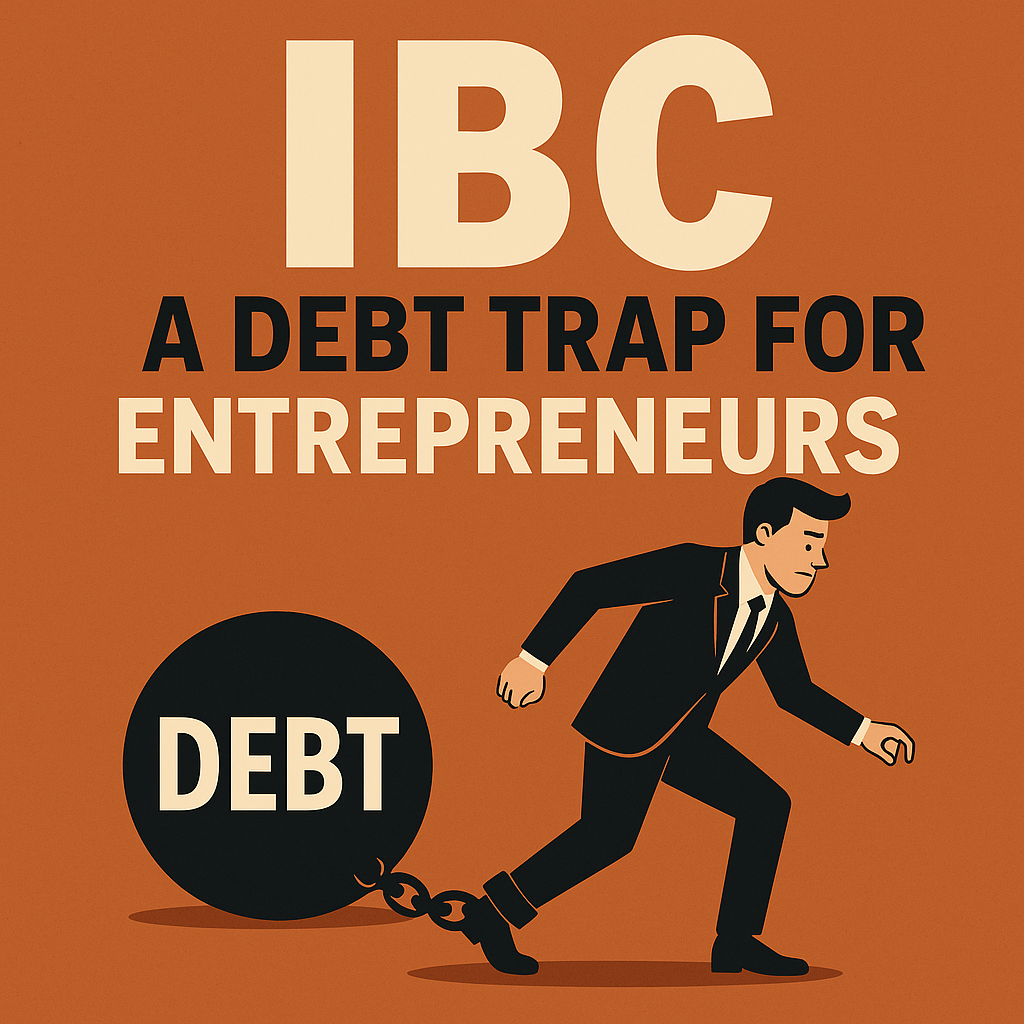IBC: A Debt Trap for Entrepreneurs – My Personal Ordeal and a Call for Reform
After dedicating three decades to building Su-kam Power Systems Ltd, I personally navigated the tumultuous waters of liquidation. This experience has given me a front-row seat to the significant, often painful, shortcomings of India’s Insolvency and Bankruptcy Code (IBC). While the IBC was envisioned as a comprehensive framework to balance the interests of investors and borrowers, it has, in practice, become a complex and often devastating process for entrepreneurs.

A Landmark Judgment Exposes the Flaws in COC Conduct
The recent Delhi High Court verdict in Kunwer Sachdev vs. IDBI Bank and Ors. is a pivotal moment that underscores a critical gap in the Indian insolvency landscape.https://kunwersachdev.com/news/why-the-delhi-hcs-push-for-a-code-of-conduct-is-a-crucial-step-for-insolvency-reform/
The court’s judgment highlighted several crucial points:
Lack of Clear COC Guidelines: There’s a glaring absence of specific guidelines governing the conduct of the Committee of Creditors (COC) under the IBC. This void leaves room for arbitrary actions and a lack of accountability.
Erosion of Company Value: The court rightly pointed out the significant potential for a company’s value to erode during the Corporate Insolvency Resolution Process (CIRP), often due to the COC’s actions or inactions.
Urgent Need for COC Guidelines: Recognizing the critical importance of fair and efficient insolvency proceedings, the court has directed the Insolvency and Bankruptcy Board of India (IBBI) to formulate a much-needed code of conduct for COCs. This is a vital step towards bringing transparency and accountability to the process.
The Valuation Paradox: A Costly and Irrelevant Exercise
A core issue I’ve observed firsthand lies in the IBC’s valuation process. The code mandates two valuations – fair value and liquidation value – at the very outset of insolvency proceedings. Paradoxically, these valuations often become irrelevant to the eventual outcome, as the company is either sold or liquidated based on other factors. This exercise transforms into an expensive and time-consuming formality, draining precious resources from an already stressed company that desperately needs them.
The original intent behind these valuations was likely twofold: to prevent the erosion of assets by the COC and to provide a fair exit value for the entrepreneur. However, the current code unfortunately fails to operationalize either of these crucial objectives.
The Human Cost of Disproportionate Debt
The absence of a clear link between these initial valuations and subsequent proceedings has far-reaching and devastating consequences. Without a valuation-based benchmark, the entrepreneur often bears the brunt of the entire debt, regardless of the company’s actual worth. This disproportionate burden, coupled with the aggressive tactics frequently employed by creditors, can lead to immense mental anguish and, in tragic cases, even suicide.
A truly effective valuation should be pivotal. It should determine the recoverable debt and, crucially, halt interest accrual once the insolvency process begins. This would not only simplify calculations but also significantly reduce the scope for arbitrary actions by creditors. Furthermore, critical processes like forensic audits, fraud investigations, and defaulter declarations should be anchored to these valuations, streamlining the entire process and minimizing harassment for entrepreneurs.
A Call for Radical Overhaul
The IBC, in its current form, is a system in crisis. It has, for many, morphed into a tool of oppression rather than a mechanism for recovery and revival. To truly salvage its original purpose, the code must undergo a radical overhaul. The valuation process needs teeth, becoming a binding and consequential part of the proceedings. Crucially, the entrepreneur must be given a fair chance at redemption and a dignified resolution.
Having personally endured the harrowing ordeal of insolvency, I can attest to the profound human cost of these systemic failures. My experience serves as a stark reminder of the urgent need for reform. The IBC must evolve to prioritize the entrepreneur’s dignity and the sanctity of human life over mere financial considerations. Only then can India genuinely claim to have a bankruptcy code that fosters entrepreneurship and sustainable economic growth.
Kunwer Sachdev
Disclaimer: Mr. Kunwer Sachdev, the original founder and visionary behind Su-Kam, is no longer associated with Su-Kam Power Systems Ltd. He has not been involved in the management, operations, or decision-making of the company for several years. Any products, services, communications, or representations made under the Su-Kam name have no connection to Mr. Kunwer Sachdev. His current efforts are entirely focused on new innovations and ventures under different entities, including his latest initiative, Su-vastika, which is redefining the energy storage and power backup industry.
Very meaningful inputs and concerns. Can the solution be elaborated in steps and stages?